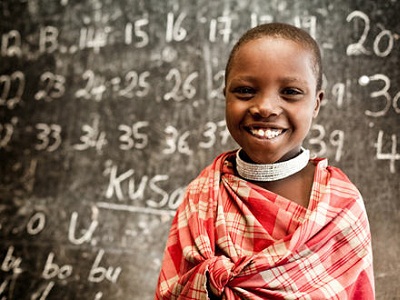Many in the aid and ICT4E community know NEPAD — the New Partnership for African Development (NEPAD) — and probably remember the launch of the e-School Initative, first announced during the Africa Summit of the World Economic Forum in June 2003. As part of the overarching objective of the NEPAD program to enhance Africa’s growth, development and participation in the global economy, the e-School component involves a complex implementation strategy involving a multi-country, multi-stakeholder, and multi-stage approach to introduce ICT use and support to 600,000 schools across Africa. But now, close to ten years after the initiative was first introduced, what progress has it made?
That’s what participants and leaders of the NEPAD e-School Initiative discussed when they gathered in Accra, Ghana earlier this week for the two-day NEPAD e-School Regional ECOWAS Conference. Reverend Emmanuel Dadebo, Head of the Teacher Education Division of Ghana Education Service, led the discussion and press event, emphasizing the project’s need for a business plan that promotes private sector investment by introducing a new Private Public Partnership (PPP) model.
The conference comes after five years of discussion and debate concerning the key findings made during the initial phase of the e-School Initiative — the “NEPAD e-Schools Demo”. The purpose of the Demo was to accrue a body of knowledge, based on real-life experiences of implementing ICT in schools across the African continent, in order to inform the rollout of the NEPAD e-Schools Initiative. The program was implemented in six schools in each of 16 countries across Africa through partnerships that involved private sector consortia, the country government and the NEPAD e-Africa Commission (eAC), which is responsible for the development and implementation of the NEPAD ICT program.
Though various stakeholders and members of the aid community consider the Demo successful in some ways, like introducing ICT hubs into rural communities, most agree that it remains unsustainable in its current form. A report released by infoDev and the Commonwealth of Learning (COL) back in 2007 entitiled “The NEPAD e-Schools Demonstration Project: A Work in Progress”, highlights the realization of this challenge within the early stages of the Demo and stressed the need for dialogue between all stakeholders:
“The expectations that implementation of the Demo would occur within a few months of it being announced in the participating countries, and, that a Business Plan would be developed to address sustainability and future rollout, were not met, and explanations for the delays were not effectively communicated. The disappointment and cynicism that resulted in some of the participating countries underlines the oft-learned rule of project management: Communicate! Communicate! Communicate!”
Like many development projects of this kind, and on such a large scale, lessons like these take time to learn and often come from trial and error. Shafika Isaacs, the founding executive director of SchoolNet Africa and a member of the monitoring and evaluation team for the report concluded saying this:
“Never before has there really been a program that mobilised national government participation and leadership at the official continental level in the way the NEPAD e-Schools vision has. Further, it has brought the private sector into partnerships that, while experiencing growing pains, has mobilised resources in a way that few other projects have been able to do. And there is much yet to learn about doing this in an optimal way.”
Exactly how much has been learned between 2007 and now, has yet to be seen. Several news articles have claimed that the program has already benefited several schools in Ghana and according to a statement given in Accra at the e-Schools conference, Ghana will launch the next phase of NEPAD e-Schools later this year. The program’s methods of monitoring and evaluating these benefits and ensuring effectiveness and transparency are unclear. However, with more buy-in from the private sector and the introduction of a new business model, it’s clear that some progress is being made and a more sustainable future for the e-Schools Initiative could be within reach.














































